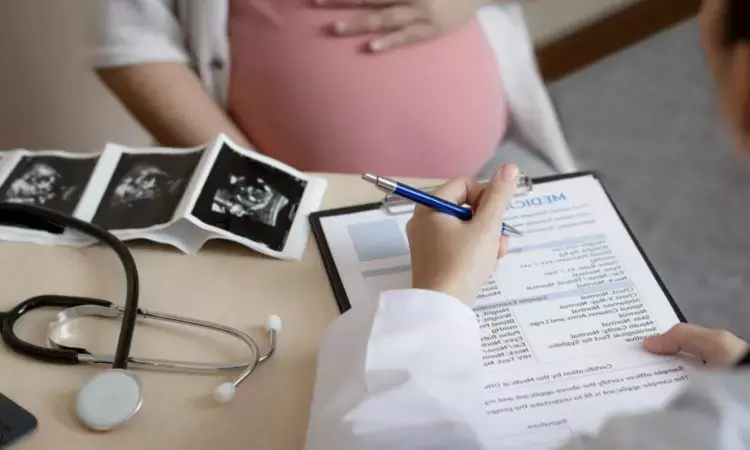- Home
- Medical news & Guidelines
- Anesthesiology
- Cardiology and CTVS
- Critical Care
- Dentistry
- Dermatology
- Diabetes and Endocrinology
- ENT
- Gastroenterology
- Medicine
- Nephrology
- Neurology
- Obstretics-Gynaecology
- Oncology
- Ophthalmology
- Orthopaedics
- Pediatrics-Neonatology
- Psychiatry
- Pulmonology
- Radiology
- Surgery
- Urology
- Laboratory Medicine
- Diet
- Nursing
- Paramedical
- Physiotherapy
- Health news
- Fact Check
- Bone Health Fact Check
- Brain Health Fact Check
- Cancer Related Fact Check
- Child Care Fact Check
- Dental and oral health fact check
- Diabetes and metabolic health fact check
- Diet and Nutrition Fact Check
- Eye and ENT Care Fact Check
- Fitness fact check
- Gut health fact check
- Heart health fact check
- Kidney health fact check
- Medical education fact check
- Men's health fact check
- Respiratory fact check
- Skin and hair care fact check
- Vaccine and Immunization fact check
- Women's health fact check
- AYUSH
- State News
- Andaman and Nicobar Islands
- Andhra Pradesh
- Arunachal Pradesh
- Assam
- Bihar
- Chandigarh
- Chattisgarh
- Dadra and Nagar Haveli
- Daman and Diu
- Delhi
- Goa
- Gujarat
- Haryana
- Himachal Pradesh
- Jammu & Kashmir
- Jharkhand
- Karnataka
- Kerala
- Ladakh
- Lakshadweep
- Madhya Pradesh
- Maharashtra
- Manipur
- Meghalaya
- Mizoram
- Nagaland
- Odisha
- Puducherry
- Punjab
- Rajasthan
- Sikkim
- Tamil Nadu
- Telangana
- Tripura
- Uttar Pradesh
- Uttrakhand
- West Bengal
- Medical Education
- Industry
Spontaneous preterm birth tied to long-term maternal mortality risk: Study

USA: A recent study has suggested that women with spontaneous preterm birth may be at increased risk for all-cause and some cause-specific mortality. The study was featured in BJOG: An International Journal of Obstetrics & Gynaecology on 22 May 2023.
Preterm delivery is defined as delivery/birth between 20 weeks to less than 37 weeks of gestational age. Preterm delivery is shown to be a contributor to an increased risk of neonatal and perinatal mortality and morbidity.
Four categories of preterm birth have been identified; premature preterm rupture of membranes, spontaneous unexplained preterm labour with intact membranes, multifetal pregnancy, and indicated preterm birth due to maternal conditions. The first two categories are classified as "spontaneous preterm delivery" and contribute to preterm birth majorly.
L. H. Theilen, University of Utah Health, Salt Lake City, Utah, USA, and colleagues aimed to determine whether women with spontaneous preterm birth (PTB) have increased risks for long-term mortality in a retrospective cohort study. The study was conducted in the setting of births in Utah between 1939 and 1977.
The researchers included women with a singleton live birth ≥20 weeks who survived at least one year after the delivery. Those who had never lived in Utah underwent induction (except for preterm membrane rupture), had unlikely birthweight/gestational age combinations, or had another diagnosis likely to cause preterm birth were excluded.
Exposed women had ≥1 spontaneous preterm birth between 20+0 weeks and 37+0 weeks. Women with more than one spontaneous PTB were included only once. Unexposed women had all deliveries at or beyond 38+0 weeks. Matching was done between exposed and unexposed women by infant sex, birth year, birth order, and maternal age group. Following the index delivery, women were followed for up to 39 years. Cox regression was used to compare overall and cause-specific mortality risks. A total of 29 048 exposed and 57 992 matched unexposed women were included.
The study led to the following findings:
- There were 3551 deaths among exposed (12.2%) and 6013 deaths among unexposed women (10.4%).
- Spontaneous PTB was associated with all-cause mortality (adjusted hazard ratio [aHR] 1.26), death from neoplasms (aHR 1.10), circulatory disease (aHR 1.35), respiratory disease (aHR 1.73), digestive disease (aHR 1.33), genito-urinary disease (aHR 1.60) and external causes (aHR 1.39).
"Spontaneous preterm birth is tied to moderate risks for all-cause and some cause-specific mortality," the researchers conclude.
Reference:
Theilen, L. H., Hammad, I., Meeks, H., Fraser, A., Manuck, T. A., Varner, M. W., & Smith, K. R. Long-term maternal mortality risk following spontaneous preterm birth: A retrospective cohort study. BJOG: An International Journal of Obstetrics & Gynaecology. https://doi.org/10.1111/1471-0528.17552
Dr Kamal Kant Kohli-MBBS, DTCD- a chest specialist with more than 30 years of practice and a flair for writing clinical articles, Dr Kamal Kant Kohli joined Medical Dialogues as a Chief Editor of Medical News. Besides writing articles, as an editor, he proofreads and verifies all the medical content published on Medical Dialogues including those coming from journals, studies,medical conferences,guidelines etc. Email: drkohli@medicaldialogues.in. Contact no. 011-43720751


